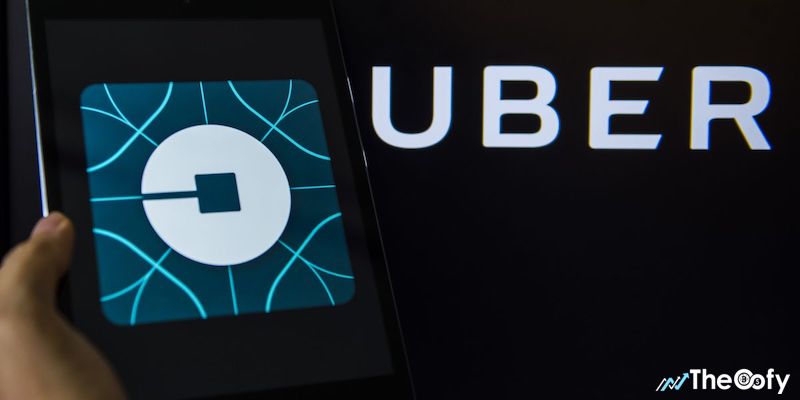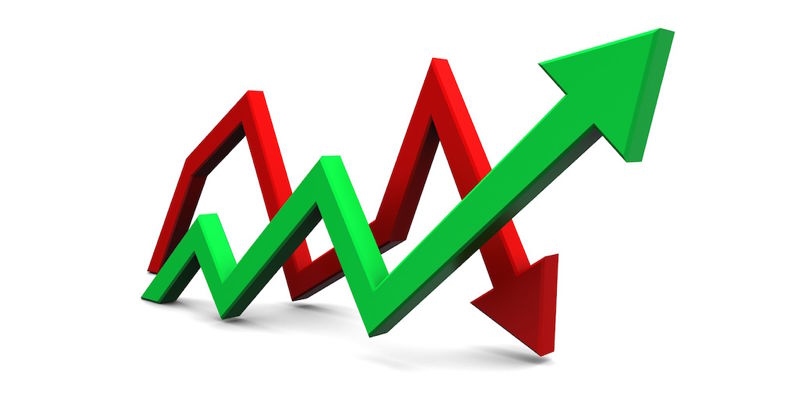Lyft has already gone public. But is it ok to invest in newly public companies? Uber IPO has been finally announced on Thursday, May 9th. and became a publicly traded company, alongside the fact that Uber has become the second name for ridesharing.
At the opening sale, Uber started at the price of 45$, soon going down below the initial price and touching 41$ per share at the closing.
Uber raised 8.1 billion dollars with their IPO in oppose to the expected 9 billion, while market capitalization of Uber now stands at 76.5 billion dollars.
Although challenged by another IPO issued by its main competitor, Lyft, the company went live already on March 30th, 2019, Lyft had a similar destiny, Uber’s ridesharing competitor that went public at the end of March 2019, dropping from the starting share price of 72$ and ending at 51$ over the course of 5 weeks.
The prominent ridesharing startup already has promising investors such as Jeff Bezos from Amazon, SoftBank, Toyota Motor Company, Tencent Music, Fidelity Investments as well as other companies and individual major investors.
Table of Contents
Uber IPO News
Uber is not as impatiently anticipated in vain, as the ridesharing giant is said to have a major opportunity to become one of the biggest public offerings that the market had ever seen.
This is the case because the company is already valued at 120 billion dollars after announcing their IPO, while the estimated value exceeds the previous evaluation by 50 billion dollars. With these estimates, also confirmed by JP Morgan and Goldman Sachs, Uber could surpass Facebook IPO of 104 billion dollars back in 2012 when the company went public and also Google’s IPO valued at 23 billion dollars back in 2004 when Google decided to become a publicly traded company.
Uber has a major potential for further growth and already has a well-established name in the industry of ridesharing, which could make it one of the top initial public offerings by far despite the fact that Uber is considered to be challenged by a smaller, but an equally promising company, Lyft.
For multiple companies, it’s the moment they’ve been waiting for: The window has opened for them to go public. You’ve probably heard the names, including Levi Strauss, which made its public market debut this week. Ride-sharing businesses Lyft and Uber, among other companies, are also teed up to go public in the coming months.
Wait and see before you invest!
Your best opportunity to invest may be later. According to CNBC, while these companies have found their window to go public, your best opportunity to invest may be later. New offerings come with high risks and few guarantees. The longer you wait, the more likely you are to get a fair price, experts say.
But if you’re thinking you want to invest in these stocks, experts generally have one word of advice: Wait. “IPOs aren’t just about, ‘Oh, I want to invest in the things I know,’” said Kathleen Smith, principal and manager of IPO ETFs at Renaissance Capital. “It’s about, ’How do I make money investing in these?″ “It doesn’t do any good to own something when you’re losing money in it.”
In today’s market, chances are that buying in on a newly public stock could be a losing proposition. Financial experts say there are several reasons why. You could already be at a disadvantage. Even though the stock is not yet public, you could already be behind. Just accessing IPO shares is difficult, Smith noted, because most shares will be allocated to big institutional clients of Wall Street firms.
They have already reached the peak
What’s more, many of the names going public now have waited longer to go public and seen their valuations surge during that time, said Nicole Tanenbaum, chief investment strategist at Chequers Financial Management. Uber and Lyft, for example, are considered unicorns, or startup companies valued at more than $1 billion. Along the way, they have raised large amounts of private funding. Uber previously raised roughly $20 billion in funding and is eyeing a $120 billion valuation when it goes public. Lyft has raised more than $5 billion and plans to be valued at $23 billion.
“When they do go public, much of the appreciation has already happened in the private markets,” Tanenbaum said. That means that earlier investors, who got in at a lower price, stand to see greater gains. “The upside for the public investor is much more diminished,” Tanenbaum said. Some companies that are going public these days — including Levi Strauss and Lyft — are pursuing a dual-class structure. That means that certain investors — notably company management — have preferential shares and voting rights compared to a separate common stock that typically comes with just one vote per share.
“In the long run, it’s not good,” Smith said. “If problems happen with the company, you want to be able to know the founders can’t just do what they want without some kind of checks and balances.”
Think of Facebook: Investors suffered losses
You might not be able to stomach the ups and downs. While many IPOs close up on their first day, that first day pop and subsequent run up is not guaranteed, according to Michael McKevitt, director of financial planning at Guillaume & Freckman. Think back to Facebook’s IPO in May 2012. The company went to market at a high price and investors suffered losses at the outset.
Be ready for multiple 50 percent declines
It took about a year for Facebook’s stock to get back to its opening price. Today, the stock’s performance would be considered a success — as long as you held on. “Even if you pick the right company, like Facebook, which has done amazingly well, you still had to put up with a 50 percent decline, multiple 40 percent declines, multiple 20 percent declines,” McKevitt said. “How many people bought it and held onto it through all of these moves?”
Investors would be wise to keep in mind that the lock up period could affect the stock price, said Megan Gorman, managing partner at Chequers Financial Management. Lock up periods are a set amount of time, typically three to six months, when large shareholders are prohibited from selling their shares following an IPO. Once that time is over, that can sway the stock price. “You can sometimes see the stock price has a pull back — not always, but there can be — when the lockup ends,” Gorman said.
Is it ok to invest in a newly public company?
You could be investing the wrong way. All of those considerations mean one thing: Investing in a newly public company might not be the right decision for you — at least for now. “If you want to be the guy or gal at the cocktail party or the golf course saying that you bought one of those unicorns when they IPO’ed, as long as you go in with the expectation that it might not be the best investment you ever make … that’s great,” Gorman said. “But if this is your retirement money, if this is all of your savings, going in an IPO doesn’t make sense from a big picture perspective.”
Uber IPO: Financials, growth, position and regulations… What to know before Uber goes public
With an estimated company valuation of around $100 billion, Uber could be the largest IPO in U.S. market history. Benzinga reported that, unfortunately for retail investors who do not get shares at the IPO price, history hasn’t been kind to large tech IPOs. Eight of the ten largest tech IPOs in history declined between 25 and 71 percent in the year following their first day of trading. The most recent example of a high-profile tech IPO bust is Snap, Inc. Snap closed its first day of trading in March 2017 at a price of $24.48. Roughly two years later, Snap shares are now trading at $11.44.
Is Uber IPO worth buying?
According to CNBC, Uber’s eye-popping $120 billion valuation would make it worth more than Nvidia, 3M and PayPal. Proposals for the ride-hailing IPO would reportedly value Uber at $120 billion as a public company. At that valuation, its market value would be bigger than profitable, established companies like Nvidia, Amgen and 21st Century Fox. Uber lost more than $1 billion last year.
Last year it managed to stem some of the bleeding. Its adjusted losses slowed by 15 percent, to $1.8 billion, according to Uber’s self-reported financials published in February. In 2017, Uber lost $2.2 billion. The company increased its revenue, though at a slower pace than in the previous year. Full-year revenue last year was $11.3 billion, up 43 percent year over year.
:no_upscale()/cdn.vox-cdn.com/uploads/chorus_asset/file/15972015/IPOs_2019_charts_1.jpg)
Here Chris Neiger of Motley Fool summarizes some critical points:
Uber’s financials, in a nutshell
Uber recently disclosed some financial data showing that revenue grew 43% year over year to $11.3 billion in 2018. Additionally, the company’s gross bookings for the full year (what Uber makes before it pays its drivers) reached $50 billion, up 45% from 2017.
What’s impressive about this growth is that the company’s losses are slowing. Uber’s losses totaled $1.8 billion last year, down from $2.2 billion in 2017. Significant losses at this stage for a fast-growing company aren’t unusual. For example, Uber’s biggest rival in the United States, Lyft, had a net loss of $911.3 million last year on revenue of just $2.1 billion.
It’s worth mentioning, however, that Uber’s sales are slowing on a sequential basis. In the fourth quarter of 2018, sales were up 25% year over year, but that’s not as strong as its 38% increase in the third quarter. Investors only have a snapshot of Uber’s financials to consider, but the slowdown might not be too much to worry about, especially when considering that in the most recently reported quarter, gross bookings jumped 37% to $14.2 billion.
Uber’s key growth opportunities
Uber isn’t content to only be a ridesharing company. In fact, about 13% of the company’s sales in the third quarter of 2018 came from its food delivery service, Uber Eats. This business is likely to become an increasingly important part of Uber, and the company contends that it is the “largest online food-delivery business outside of China, based on gross bookings.” But according to a third-party analytics firm, DoorDash surpassed Uber Eats in U.S. sales toward the end of 2018.
Can Uber continue to defend its market position?
There’s no denying that Uber is a ridesharing leader in the U.S. with virtually 60% of the market (Lyft takes up the rest). With operations around the world, Uber has already made huge gains building out its brand.
Uber will continue to face regulation and lawsuits
All large companies face the specter of regulations and lawsuits, and Uber has had its fair share as a young company. The attention it garners likely won’t decrease with a public filing.
Uber IPO Coming: When Will Uber Launch IPO? Uber Is Expected To File S-1 In April 2019
2019 Tech IPOs: Is Uber IPO Worth Buying? Will It Be A Good Investment? Eight of the Ten Largest Tech IPOs Lost Value! Tech IPO’s might be a little risky if you look back to the examples. Uber is planning to file S-1 in April 2019. The valuation is expected to be $120B.
Is Uber IPO a good investment?

Investors previously considered that investing in Uber’s upcoming IPO would make a more profitable and more reliable investment with significantly mitigated risks in oppose to its “smaller” competitor, Lyft, it now appears that there are more than several reasons why Lyft IPO may beat Uber initial offering in the long run.
Uber IPO forecast

Eight of the ten largest tech IPOs in history declined between 25 and 71 percent in the year following their first day of trading. The most recent example of a high-profile tech IPO bust is Snap, Inc. Snap closed its first day of trading in March 2017 at a price of $24.48. Roughly two years later, Snap shares are now trading at $11.44.
Pymnts.com reported that, while ridership was on the incline, and Uber reported $50 billion in total bookings for ridesharing and food delivery for the final quarter of the year, revenue growth came in at only 2 percent between Q3 and Q4. In January, it was reported that Uber’s valuation, when it goes public, is likely to be $14 billion less than its most recent private valuation.
The challenge for Uber going forward, according to David Brophy, professor of finance at the University of Michigan’s Ross School of Business, is its losses. This, he noted last month to pymnts.com, gives investors pause around whether or not Uber will ever be able to stop subsidizing some markets enough that it can actually put the firm in the black.
“Uber needs to show it can control costs and can make money — basically provide a strong argument that its business model is not broken, and that it can achieve and sustain profitability despite issues with drivers, customers and politicians,” he said.
Surge pricing?… Doesn’t stop Uber from spending $3.1B on “the Uber of the Middle East”: Careem. The deal had leaked before — Tuesday’s surprise was that Uber closed it just weeks before it plans to go public. Most companies would be focused on their IPO right now. Uber’s not most companies.
Uber is buying 100% of its regional rival Careem
Let someone else drive… That’s been Uber’s go-to move abroad. It’s buying 100% of its regional rival Careem, but typically it invests in just a percentage of its competitors so they can keep running their own company. This way if a competitor wins, it wins. And a bunch of Uber copycats copy that same strategy:
- Uber owns 37% of Russia’s Yandex, and 28% of Southeast Asia’s Grab. And it used to own 20% of China’s Didi but then sold it back to Didi.
- Didi invested $600M in Brazil’s ride-hailer, 99 Taxis.
- Gett, which is Israeli, owns part of New York’s Juno.
- It’s incestuous competition in ride-hailing, defined by the Uber of (blank) cozying up with the Uber of (blank).

THE TAKEAWAY
International is Uber’s differentiator… With Lyft about to IPO Friday and Uber aiming for April, both are about to become available to public investors. Uber’s not just bigger, it’s also more internationally sophisticated. It’s studied abroad plenty, so an investment in Uber could be exposure to Earth-wide ride-sharing.
FYI, Careem is The Middle East’s biggest tech startup sale ever — Here’s what Uber’s Iranian-born CEO emailed Uberites about it:
Read CEO Dara Khosrowshahi’s email to Uber staff on the Careem acquisition
“It’s a great day for the Middle East, for the region’s thriving tech sector, for Careem, and for Uber,” CEO Dara Khosrowshahi told staff in an email.
Uber confirmed its $3.1 billion acquisition of ride-hailing service Careem on Tuesday.
On Tuesday, CEO Dara Khosrowshahi sent this email to his staff on Uber’s acquisition of Careem.
From: Dara
To: Team@
Date: March 25, 2019 at 11:45pm PT
Subj: Accelerating in the Middle East
Five years ago, Uber launched in the Middle East. It was the start of an incredible journey, with millions of riders and drivers finding new ways to move and work in a dynamic region that’s become so important to Uber. Now Pakistan is one of our fastest-growing markets in the world, women are driving with Uber across Saudi Arabia, and we chose Cairo to launch our first Uber Bus product late last year.
Today we are taking the next step in this journey—well, it’s more like a leap, and a big one: in a few minutes, we’ll announce that we’ve agreed to acquire Careem. Importantly, we intend to operate Careem independently, under the leadership of co-founder and current CEO Mudassir Sheikha. I’ve gotten to know both co-founders, Mudassir and Magnus Olsson, and what they have built is truly extraordinary. They are first-class entrepreneurs who share our platform vision and, like us, have launched a wide range of products—from digital payments to food delivery—to serve consumers.
I expect many of you will ask how we arrived at this structure, meaning allowing Careem to maintain an independent brand and operate separately. After careful consideration, we decided that this framework has the advantage of letting us build new products and try new ideas across not one, but two, strong brands, with strong operators within each. Over time, by integrating parts of our networks, we can operate more efficiently, achieve even lower wait times, expand new products like high-capacity vehicles and payments, and quicken the already remarkable pace of innovation in the region.
This acquisition is subject to regulatory approval in various countries, which we don’t expect before Q1 2020. Until then, nothing changes. And since both companies will continue to largely operate separately after the acquisition, very little will change in either teams’ day-to-day operations post-close.
Today’s news is a testament to the incredible business our team has worked so hard to build. It’s a great day for the Middle East, for the region’s thriving tech sector, for Careem, and for Uber.
Uber on,
Dara
Source: Robinhood Newsletter




